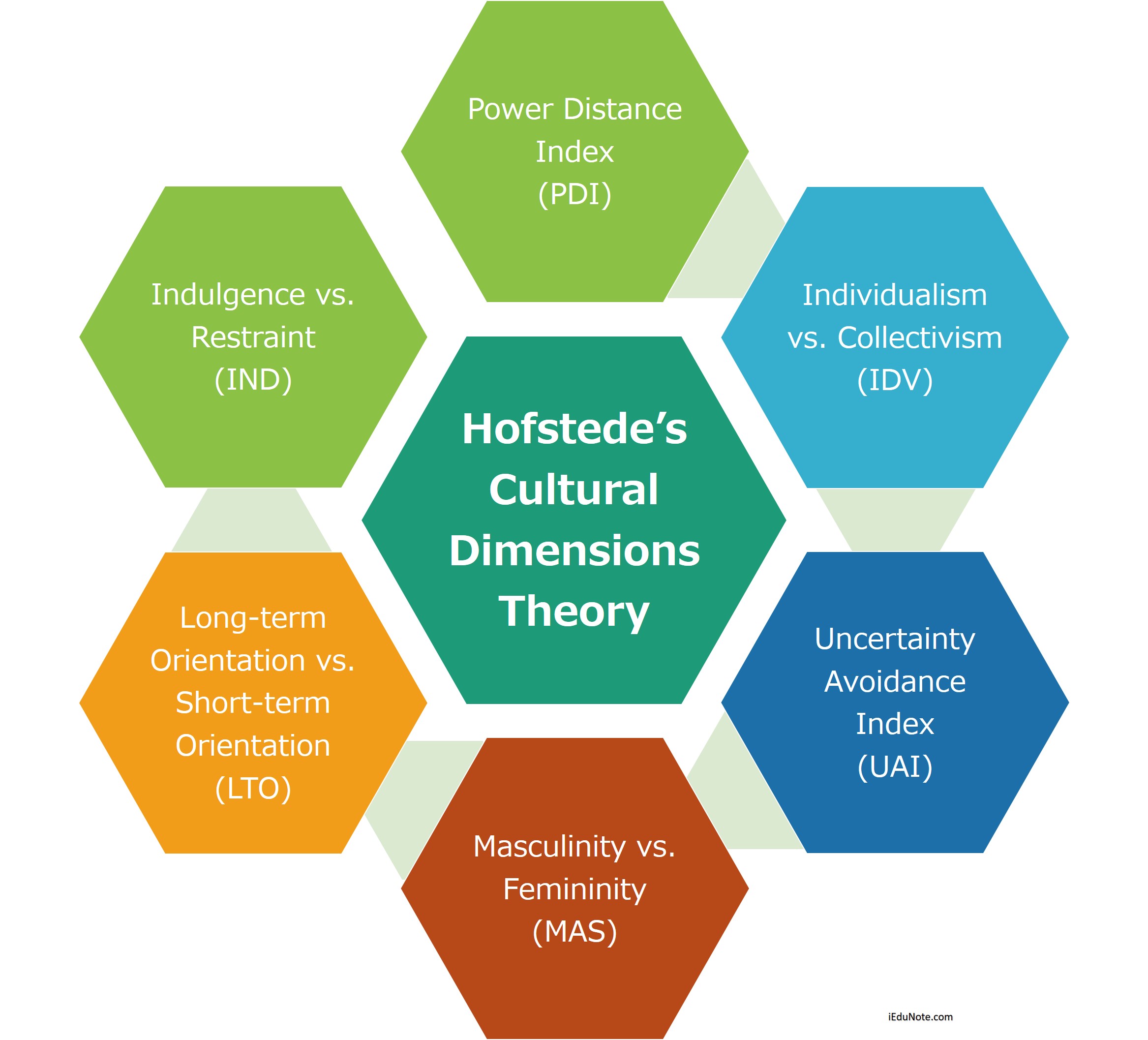Hofstede’s cultural dimensions theory is a framework for cross-cultural communication developed by Geert Hofstede.
lt describes the effects of a society’s culture on the values of its members and how these values relate to behavior, using a structure derived from factor analysis.
Hofstede developed his original model by using factor analysis to examine the results of a worldwide survey of employee values by IBM between 1967 and 1973. It has been refined since.
The original theory proposed four dimensions to analyze cultural values: individualism-collectivism, uncertainty avoidance, power distance (strength of social hierarchy), and masculinity-femininity (task orientation versus person orientation).
Independent research in Hong Kong led Hofstede to add a fifth dimension, long-term orientation, to cover aspects of values not discussed in the original paradigm.
In 2010, Hofstede added a sixth dimension, indulgence versus self-restraint. The theory has been widely used in several fields as a paradigm for research, particularly in cross-cultural psychology, international management, and cross-cultural communication.
It continues to be a major resource in cross-cultural fields. It has inspired a number of other major cross-cultural studies of values, as well as research on other aspects of culture, such as social beliefs.
Hofstede’s cultural dimensions theory is described below;
6 dimensions of Hofstede’s cultural dimensions theory;

Power Distance Index (PDI)
The Power Distance Index is defined as “the extent to which the less powerful members of organizations and institutions (like the family) accept and expect that power is distributed unequally.” In this dimension, inequality and power are perceived by the followers or the lower level.
A higher degree of the Index indicates that hierarchy is clearly established and executed in society without doubt or reason. A lower degree of the Index signifies that people question authority and attempt to distribute power.
Individualism vs. Collectivism (IDV)
This index explores the “degree to which people in a society are integrated into groups.” Individualistic societies have loose ties that often only relate an individual to his/her immediate family.
They emphasize the “I” versus the “we.” Its counterpart, collectivism, describes a society in which tightly-integrated relationships tie extended families and others into in-groups. These in-groups are laced with undoubted loyalty and support each other when a conflict arises with another in-group.
Uncertainty Avoidance Index (UAI)
The Uncertainty Avoidance Index is defined as “a society’s tolerance for ambiguity,” in which people embrace or avert an event of something unexpected, unknown, or away from the status quo.
Societies that score a high degree in this index opt for stiff codes of behavior, guidelines, and laws and generally rely on absolute Truth, or the belief that one lone Truth dictates everything and people know what it is.
A lower degree in this index shows more acceptance of differing thoughts/ideas. Society tends to impose fewer regulations, ambiguity is more accustomed to, and the environment is more free-flowing.
Masculinity vs. Femininity (MAS)
In this dimension, masculinity is defined as “a preference in society for achievement, heroism, assertiveness, and material rewards for success.” Its counterpart represents “a preference for cooperation, modesty, caring for the weak and quality of life.”
Women in their respective societies tend to. display different values. In feminine societies, they share modest and caring views equally with men. In more masculine societies, women are more emphatic and competitive but notably less emphatic than men. In other words, they still recognize a gap between male and female values.
This dimension is frequently viewed as taboo in highly masculine societies.
Long-term Orientation vs. Short-term Orientation (LTO)
This dimension associates the connection of thenpast with current and future actions/challenges. A lower degree of this index (short-term) indicates that traditions are honored and kept while steadfastness is valued.
Societies with a high degree in this index (long-term) view adaptation and circumstantial, pragmatic problem-solving as a necessity.
A poor country that is short-term oriented usually has little to do economic development, while long-term oriented countries continue to develop to a point.
Indulgence vs. Restraint (IND)
This dimension is essentially a measure of happiness, whether or not simple joys are fulfilled.
Indulgence is defined as “a society that allows relatively free gratification of basic and natural human desires related to enjoying life and having fun.”
Its counterpart is defined as “a society that controls gratification of needs and regulates it by means of strict social norms.” Indulgent societies believe themselves to be in control of their own lives and emotions; restrained societies believe other factors dictate their lives and emotions.